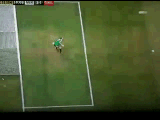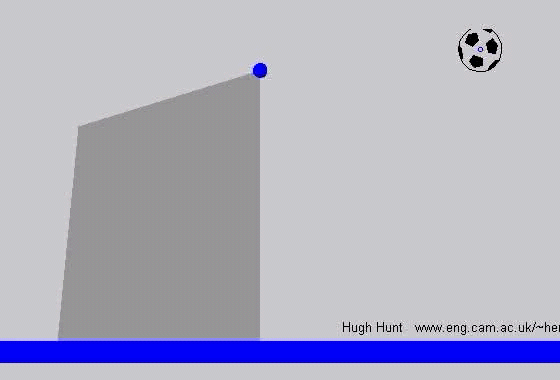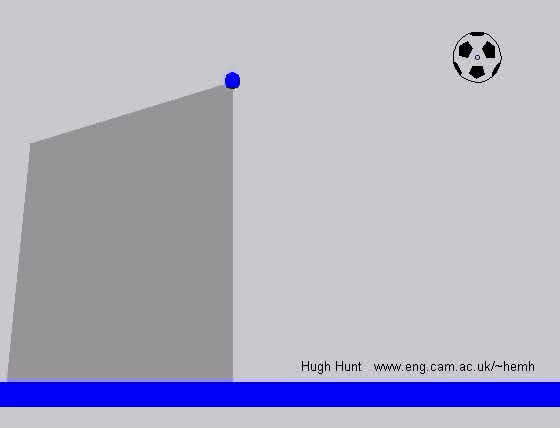2. Conservation of Energy at each collision.
The ball has the dynamic properties of a thin spherical shell.
OK, it's true that the ball probably didn't follow exactly this path, and it's almost certain that Lampard didn't put so much backspin on the ball.
But the key thing here is that simple physics can explain the kind of thing that was observed. The full story would mean we'd have to inculde:
- gravity (note that the ball is moving in a straight line, which is OK if it's going fast enough)
- swerve (the Magnus effect, which causes the ball to "bend" if there's any spin
- friction and skidding (almost certainly there would have been some slip at the contact with the ground)
- deformation of the ball (it's hollow and would have deformed as it hit the cross bar)
and including all these things is really very complicated.
That's why it's so pleasing that a simple model using F=ma is all that is needed to get a good idea of what is going on.
Here is another scenario:
1. Conservation of Angular Momentum at each collision;
2. Coefficient of friction at each contact μ = 0.3.
Again the ball has the dynamic properties of a thin spherical shell.
Now that there is some slip we see that Lampard didn't have to have put much backspin on the ball at all.
But the inclusion of friction means that I've had to guess a value for the coefficient of friction. In fact, I can now produce just about any motion I like
by trading off friction for initial spin. This means that we can't use the model to tell us what actually happened - unless we do some detailed experiments.
Another thing is that I've assumed μ = 0.3 at both the cross bar and at the ground. It's very unlikely to be the same for both, so there's even more scope for
"fitting" the results with two different values of μ . Note also that the value of μ will depend on how dry the ball, crossbar and grass are, how well inflated
the ball is and also how fast it is going - the ball deforms more if it is going faster and so it will wrap itself around the cross bar by varying amounts.
What this all means is that football is an unpredictable game!
| 



![[Univ of Cambridge]](http://www.eng.cam.ac.uk/images/house_style/uniban-s.gif)

![[Dept of Engineering]](http://www.eng.cam.ac.uk/images/house_style/engban-s.gif)


